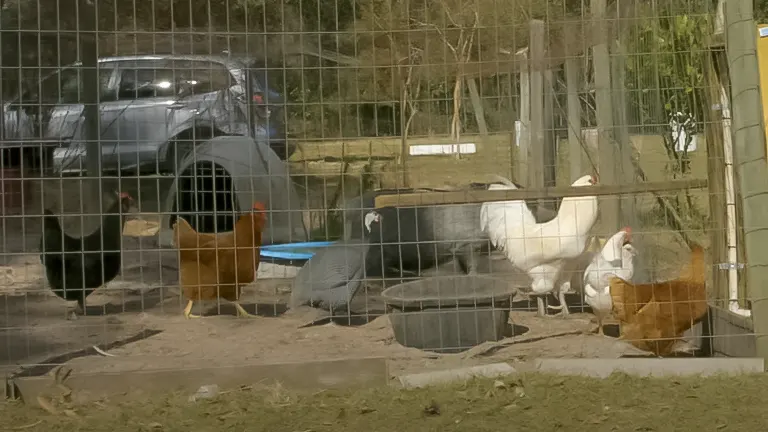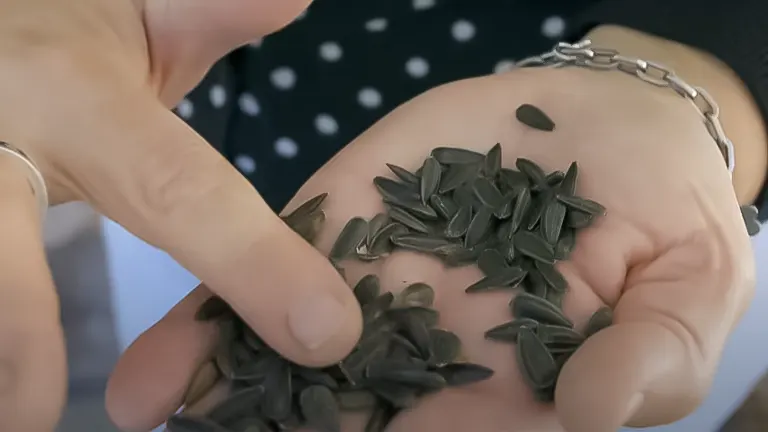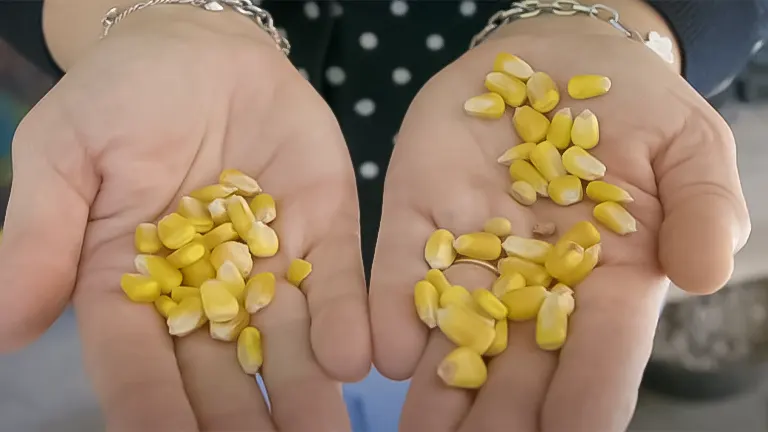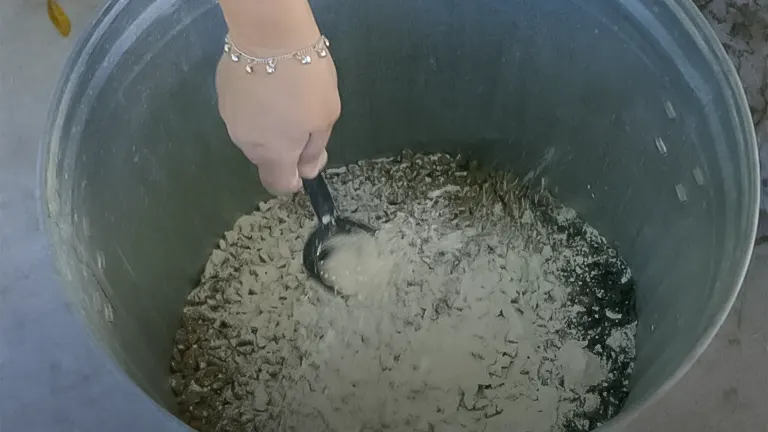What Should You Feed Your Chickens for Year-Round Egg Production? An Essential Guide
- March 12, 2024
- 12 comment
In our quest to achieve self-sufficiency and sustainability in our backyard farms, understanding the nutritional needs of our chickens is paramount.
This comprehensive guide delves into the five critical feeds that ensure your chickens not only thrive but produce eggs consistently throughout the year.

From the specific benefits of each feed type to their impact on egg production, we provide you with the insights needed to optimize your poultry nutrition strategy.
Table of Content List:
- Protein-Rich Black Oil Sunflower Seeds
- Whole Corn: A Vital Energy Source
- Nutritious and Economical Oats
- Animal Protein for Optimal Growth and Reproduction
- Essential Minerals from Oyster Shells and Diatomaceous Earth
Optimal Nutrition for Peak Egg Production
Feeding your chickens a balanced diet is the cornerstone of ensuring a steady supply of eggs year-round. The secret lies in understanding what to feed them to maintain their health and egg-laying capabilities, especially beyond their first year of life. Here are the top five feeds to incorporate into your chickens’ diet:
1. Protein-Rich Black Oil Sunflower Seeds
Black oil sunflower seeds are a powerhouse of nutrition, offering high levels of protein, essential fats, and minerals.

These small, nutrient-dense seeds are critical for maintaining the energy levels and overall health of your flock.
The high oil content also contributes to the production of higher-quality eggs, with noticeably stronger shells and richer yolks.
2. Whole Corn: A Vital Energy Source
Whole corn is often misunderstood, yet it plays a crucial role in a chicken’s diet, especially during colder months.

Providing essential carbohydrates, it acts as a significant energy source that helps maintain body temperature and supports daily activities.
Moreover, whole corn aids in the digestion process, helping other nutrients be absorbed more efficiently.
3. Nutritious and Economical Oats
Oats are an excellent source of vitamins, minerals, and fiber, contributing to the digestive health of your chickens.

They not only support the metabolic processes necessary for egg production but also help keep your chickens full and satisfied.
Introducing oats as a staple in their diet ensures they receive a balance of nutrients essential for their well-being and productivity.
4. Animal Protein for Optimal Growth and Reproduction
In the absence of natural foraging opportunities, especially during winter, supplementing your chickens’ diet with animal protein becomes essential.

High-quality puppy food, rich in meat proteins, can be an excellent alternative, providing the necessary nutrients to support egg production.
Protein is crucial for the growth, repair, and overall health of your chickens, directly influencing their ability to lay eggs consistently.
5. Essential Minerals from Oyster Shells and Diatomaceous Earth
Oyster shells are an invaluable source of calcium, crucial for the development of strong eggshells.

Additionally, diatomaceous earth serves as a natural dewormer, ensuring your chickens remain healthy and free from internal parasites that can impact their nutritional absorption and overall health.
Together, these supplements fortify your chickens against common health issues, supporting sustained egg production.
Implementing a Balanced Feeding Regimen
Achieving a balanced diet for your chickens involves more than just providing these five feeds. Understanding the proportions, frequency, and the best ways to offer these feeds can make a significant difference in your flock’s productivity. Here’s a step-by-step approach to mixing your homemade chicken feed:
- Start with a base of oats, adjusting the quantity based on the size of your flock.
- Incorporate whole corn and black oil sunflower seeds, mindful of their heavier nutritional and energy content.
- Add a layer of animal protein through high-quality puppy food, ensuring meat is the primary ingredient.
- Mix in oyster shells and diatomaceous earth evenly throughout the feed to distribute the essential minerals and ensure effective deworming.
This approach not only provides your chickens with all the necessary nutrients but also gives you control over the quality and composition of their diet. By feeding them whole foods, you’re mimicking their natural dietary habits, leading to healthier, happier chickens that are more productive.
The Benefits of a Well-Rounded Chicken Diet
Adopting this feeding strategy offers numerous benefits:
- Increased egg production: A balanced diet ensures your chickens have the nutrients needed to lay eggs consistently throughout the year.
- Improved egg quality: Essential fats and minerals lead to stronger shells and more nutritious yolks.
- Healthier flock: A diet rich in variety boosts immune systems and reduces the risk of disease and parasites.
- Cost-effective: Mixing your own feed can be more economical in the long run, allowing you to adjust ingredients based on availability and price.
Related Articles:
- Best Bedding For Chickens
- Best Safe Chicken Coop Heater
- 8×8 Chicken Coop Plans
- Turning a Shed Into a Chicken Coop
- How to Make a Chicken Coop Out of Pallets
- Best Sand for Chicken Coop
- How To Insulate a Chicken Coop
- How To Heat a Chicken Coop
- How To Keep Water from Freezing in Chicken Coop
- How to Build a Chicken Coop
- How To Build Chicken Nesting Boxes
- How to Raise Happy and Healthy Chickens in Your Backyard
- When Can Chicks Go Outside? Timing and Tips for a Smooth Transition
- 12 Reasons why Ducks are Better than Chickens
- Best Automatic Chicken Coop Doors 2024: Expert Reviews & Buyer’s Guide
- Best Fans for Chicken Coop 2024: Effective Cooling Solutions Reviewed
Final Conclusion
Feeding strategies not only ensures your chickens’ well-being but also enhances your self-sufficiency and sustainability goals. The importance of a varied diet cannot be overstated; it mirrors the natural foraging habits of chickens, leading to improved digestion, stronger immune systems, and higher egg production. Additionally, by tailoring the diet to include high-quality proteins, grains, and essential minerals, you’re directly impacting the quality of the eggs produced, making them more nutritious and delicious for your consumption.
This holistic approach to poultry nutrition fosters a harmonious and productive backyard farm, ensuring that your chickens are not just surviving, but thriving. By investing in the health of your chickens through proper nutrition, you’re also investing in the health of your family, your community, and the environment, creating a cycle of wellness and sustainability that benefits everyone involved.
Frequently Asked Questions
- What are the key components of a chicken’s diet for year-round egg production?
The key components include black oil sunflower seeds for protein and fats, whole corn for energy, oats for fiber and nutrients, high-quality animal protein to mimic natural foraging, and essential minerals from oyster shells and diatomaceous earth for strong eggshells and internal health. - How often should I feed my chickens to ensure consistent egg production?
Chickens should have constant access to their feed to meet their nutritional needs throughout the day. A structured feeding routine, offering fresh food twice daily—morning and evening—ensures they consume the necessary nutrients for egg production. - Can I feed my chickens kitchen scraps along with their regular feed?
Yes, kitchen scraps can be a healthy addition to your chickens’ diet, providing variety and additional nutrients. However, ensure the scraps are safe for chickens, avoiding toxic foods like avocado, chocolate, and onion, and that scraps complement rather than replace their balanced feed. - How does the nutritional need of chickens change with seasons?
During colder months, chickens require more energy to maintain body heat, so incorporating more corn and protein-rich feeds is beneficial. In warmer seasons, ensuring access to fresh, green forage and maintaining a balanced diet supports overall health and egg production. - What role does animal protein play in a chicken’s diet?
Animal protein is crucial for feather growth, bodily repairs, and egg production. Supplementing with high-quality animal protein, especially in the absence of natural foraging, supports these needs and mimics their natural diet. - Why is calcium important for chickens, and how can I provide it?
Calcium is essential for strong eggshells and the overall health of your chickens. Providing oyster shells as a separate feed allows chickens to self-regulate their calcium intake, ensuring they get enough to support eggshell formation without overdosing. - How do I prevent my chickens from getting bored with their diet?
Offering a variety of foods, including a mix of grains, seeds, and protein sources, along with safe kitchen scraps and allowing for natural foraging, keeps the diet interesting and stimulates natural behaviors. - Is it necessary to use diatomaceous earth in chicken feed?
While not strictly necessary, diatomaceous earth can be a natural, effective way to control internal parasites without the use of chemical deformers, contributing to the overall health and productivity of your flock. - How can I ensure my chickens are getting enough to eat?
Monitor your chickens’ health, productivity, and behavior. Chickens that are active, maintain a healthy weight, and produce eggs regularly are likely getting enough to eat. Adjust feed quantities based on observation and ensure constant access to clean water. - Can I mix my own chicken feed, and how do I start?
Yes, mixing your own chicken feed allows for customization based on your chickens’ nutritional needs and the seasons. Start with a base of grains like oats and corn, add protein sources like black oil sunflower seeds and animal protein, and include essential minerals. Adjust the mix based on your flock’s response and egg production rates.
We’re eager to connect with you! Share your unique experiences and insights regarding “The Ultimate Guide to Feeding Your Chickens for Year-Round Egg Production” in the comments section below. Your personal stories and knowledge could greatly assist fellow enthusiasts in nurturing their flocks more effectively. Your contribution can empower others to make well-informed choices for their chickens’ nutrition and care!

Edward Smith
Forestry AuthorWoodworking is about more than crafting; it's a harmonious connection with nature, mastering tools, and preserving our environment. I'm here to share my knowledge and experiences with you, forging a future where we can embrace wood's beauty and utility while safeguarding our forests' health and diversity.
12 comments
Very informative. Please suggest alternatives to oyster shells and oats which are not readily available in some places.
Harold kirui
March 19, 2024 1:44 pmIt was good reading this guide.
Elizabeth
March 18, 2024 5:58 amYour articles are. Very informative.how can I refer back to some of your post
Freddy Mandebvu
March 17, 2024 4:51 pmPlease I want to know the measurement to use per ingredient. Assuming I want to feed 100 layers. Thanks.
Nita
March 17, 2024 1:42 amVery educating, it gives me an insight of how to improve my chicken nutritional diet, have been searching on how I can create my chicken feeds but this clue have given me a lots of information needed to follow. Thanks
Alfred
March 16, 2024 6:48 pmWhere to buy nutritious feed for better layers to produce healthy and many eggs?
Mlungisi zondi
March 16, 2024 3:58 amI like the fact that you give alternatives to buying chicken feed. But no one sets out a ratio of content for each product mixed into the overall feed mix. Would it be possible to provide mix volumes? Thank you
Graham
March 16, 2024 3:29 amVery educative
Ezekiel Namasaka
March 16, 2024 2:49 amPls sent me regular feeding guide
Victor
March 15, 2024 8:58 pmThis is very developmental... good information,well
Bwambale Hakimu
March 15, 2024 5:29 pmI need to grow black larvae for my chicken.can you please guide me on how I can start













Maintaining a balance Nutrition is key
Imani Kibwana
March 20, 2024 3:26 pm